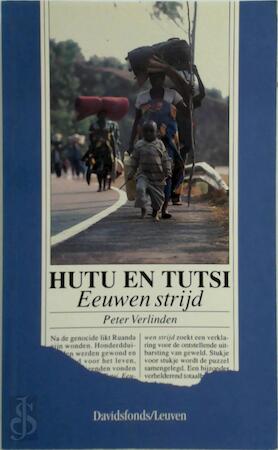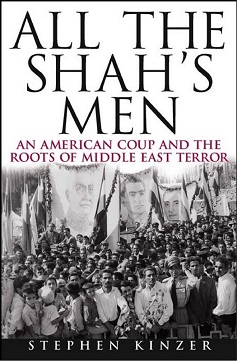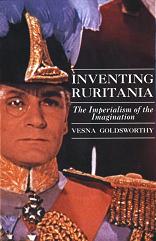
Hutu en Tutsi: Eeuwen Strijd
Peter Verlinden
177 pages
published in 1995
Published in 1995 after the Rwandan genocide had just ended, Hutu en Tutsi: Eeuwen Strijd tries to explain the context and history in which it took place. The writer, Peter Verlinden is a Belgian journalist who had been covering events in both Rwanda and neighbouring Burundi for several years before. This is not a book about the genocide itself, which is only briefly touched upon in the last few chapters, but an explainer of what made it possible. With only 177 pages to cover the whole history of Rwanda it’s of necessity more of a sketch than a complete picture. As the title Hutu en Tutsi: Eeuwen Strijd (Hutu and Tutsi: Centuries of Conflict) indicates Verlinden argues that the genocide was only the latest in a long line of conflicts between the two ethnic groups and should be seen as such, not as some inexplicable outburst of violence. The genocide, together with what was happening at the same time in former Yugoslavia was what broke the short lived optimism brought on by the end of the Cold War. The idea that now the civilised world (sic) would be able to intervene in conflicts and resolve them was proven wrong by the inability or unwillingness of the UN to stop the genocide as it was happening.
By focusing on the supposed long standing history of ethnic violence in Rwanda you might read this as an excuse for the failure of Belgium and other interested nations to stop the genocide. We saw that line of thinking trotted out a lot during the early years of the Yugoslav civil wars, the idea that Serbs and Croats and Bosniaks just naturally hate each other which you couldn’t do anything about. I was a bit wary of this myself when I first read this, but on the whole I think Verlinden did a good job explaining the circumstances and history driving the genocide without excusing it. Verlinden lets the facts speak for themselves and it’s up to the reader to draw the conclusions and lament the missed opportunities to stop the genocide.
After setting out what the book is about, Verlinden starts with a short history of pre-colonial Rwandaand its first inhabitants, the Twa. These were forest dwellers until the Hutu appeared, some 200-3000 years ago, who brought agriculture with them. The Tutsi arrived later and were pastoralist herders. To say that the Tutsi conquered Rwanda from the Hutu would be wrong, but over the centuries their power did grow, conquering the various Hutu kingdoms. By the nineteenth century it was Tutsi king who ruled most of Rwanda and a Tutsi elite that shared that power, while the Hutu majority were mostly small farmers. A roughyl feudal society, with the Hutu farmers obliged to service their Tutsi masters in various ways through unpaid labour and taxes in kind. At the same time, there were no hard ethnic borders between Hutu and Tutsi. Hutu could become part of the elite even if that was rare and whether you were either depended as much perhaps on your social status as your ethnicity.
As per usual it was the colonisers that fucked things up. First the Germans, then the Belgians took that existing divide between Tutsi and Hutu and codified it as strict ethnicity. For various bullshit racist reasons the Tutsi were elevated as closest to being white and therefore natural leaders, which meant that they got most of the positions of power in government, church and trade. The Belgians especially favoured the Tutsi at first. It was only post-war, in the fifties that this stopped as new generations of Belgian colonial administrators and church officials started instead to take the impoverished Hutu’s side. Belgium never ruled Rwanda directly, but through the existing Tutsi kings, the same way the Germans had done. By now supporting a new generation of Hutu activists and intellectuals demanding a greater share of power, they of course threatened the monarchy and its power structures. Matters came to a head as Rwanda prepared for independence.
An attack on a Hutu politician led to mass attacks on Tutsi leaders and others. The kingdom collapsed, a republic was declared and hundred thousands of Tutsi fled abroad. In Rwanda itself Hutu took over much of Tutsi power and the republic lasted until 1973 when a coup deposed the government and the second republic was proclaimed. Throughout this there were low level tensions between the two groups and occassional outburst of violence, but the real trouble started in 1990, when Tutsi refugees invaded the country to liberate it. That led to several years of civil war and more mass violence against both Tutsi and Hutu, until a peace treaty was signed in early 1994. Everything seemed to be calming down again until the president was killed in an attack on his plane coming back from the peace conference. That was the point at which the genocide started, as at first the Tutsi rebels and sympathetic Tutsi leaders were targeted but quickly escalated to include all Tutsi or ‘Tutsi looking’ people were attacked, as well as moderate Hutu.
Hutu en Tutsi: Eeuwen Strijd concludes at this point. At the time of writing Rwanda was still in an uneasy peace, with Tutsi refugees from that first wave of violence at the establishment of the Rwandan Republic returning home after decades, while million others, mostly Hutu had now fled abroad. Many of the Rwandan Tutsi had died in the genocide and their place was taken over by the returnees, who became the new elite. You can see the fires for the next conflict already being stoked while the embers of this one were still glowing, the way Verlinden describes it. In the almost three decades that have been passed since a new genocide fortunately hasn’t happened, but the conflict ia still ongoing, with Hutu refugees in Burundi and the DRC continuing low level guerilla campaigns, while Rwande has intervened in the Congolean civil wars twice as well.
I first read this in 2002 when I got it as an ex-library book and reread it today purely because my eye fell on it. This was a decent primer on the context of the genocide, but these days you might as well read the Wikipedia articles on Rwanda and its history. that of course wasn’t an option in 1995 and barely one in 2002, so I’m grateful to Verlinden for this.



